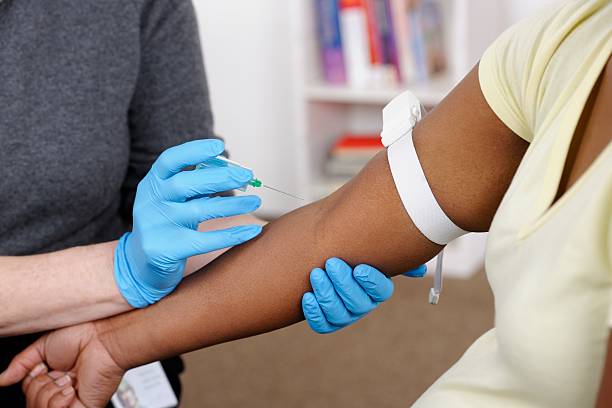Introduction
A stroke happens when an artery in the brain fissures and bleeds, or when the blood supply to the brain is cut off. The rupture or obstruction prevents oxygenated blood from reaching the tissues of the brain. When this happens, the brain receives insufficient oxygen and nutrients, and brain cells begin to die.
A stroke is a kind of cerebrovascular illness. It indicates that it has an effect on the blood arteries that provide oxygen to the brain. Damage to the brain may begin if it does not receive enough oxygen. Therefore, it is a medical condition that requires immediate treatment. Although many strokes are curable, some might be fatal or cause permanent impairment.
Types of Brain Strokes
1) Ischemic stroke
This type of stroke is the most prevalent. It occurs when the blood arteries in the brain become restricted or clogged, resulting in substantially decreased blood flow (ischemia).
Blood clots or other debris that move through the bloodstream, most typically from the heart, lodge in the blood arteries in the brain producing blocked or restricted blood vessels. Some preliminary evidence indicates that COVID-19 infection may raise the risk of ischemic stroke, but additional research is required to corroborate this.
2) Hemorrhagic stroke
When a major vessel in the brain leaks or ruptures, it causes a hemorrhagic stroke. Many disorders that affect or damage the blood arteries can cause brain hemorrhages. The following are risk factors for hemorrhagic stroke:
- Uncontrolled high blood pressure that is uncontrolled
- Excessive use of blood thinners (anticoagulants)
- Bulges at vulnerable points in your vessel walls (aneurysms)
- a traumatic event (such as a falling from stairs, a car accident)
- Protein accumulation in blood vessel walls causes vessel wall weakening (cerebral amyloid angiopathy)
- Ischemic stroke with hemorrhage
The rupture of an abnormal tangle of thin-walled blood arteries is a less prevalent cause of brain hemorrhage (arteriovenous malformation).
Brain Stroke Symptoms
If you feel that you or your close ones are experiencing a stroke, pay close attention to when the symptoms begin. Some therapy options are most successful when administered quickly after the onset of a stroke.
Among the signs and symptoms of a stroke are:
- Having difficulty communicating and comprehending what people are speaking. You may get dizzy, slur your words, or have difficulties comprehending conversation.
- Face, arm, or leg paralysis or numbness .You might have abrupt numbness, weakness, or paralysis in your face, arm, or leg. It typically only affects one side of the body. Try to raise both arms above your head at the same moment. You may be experiencing a stroke if one of your arms begins to fall. When you try to smile, one side of your lips may droop.
- Vision problems in one or both eyes. You may have blurred or darkened vision in one or both eyes, as well as seeing double.
- Headache. A sudden, intense headache, maybe followed by vomiting, dizziness, or altered consciousness may suggest a stroke.
- Walking is difficult. You could trip or lose your equilibrium. You could also experience dizziness or a lack of coordination.
A stroke needs prompt medical treatment. If you suspect you or your close ones are experiencing a stroke, contact local emergency services immediately. Prompt treatment is critical for avoiding the following outcomes:
- injury to the brain
- long-term incapacity
- death
Treatment for Brain Stroke
1) Stroke caused by ischemia
Ischemic stroke develops when arteries become blocked or constricted. Treatment usually focuses on restoring enough blood supply to the brain. The initial step in treatment is to take medications that decompose clots and prevent new ones from developing. A doctor may prescribe blood thinners such as aspirin or a tissue plasminogen activator injection (TPA).
TPA is quite efficient in dissolving blood clots. However, the injection must be administered within 4.5 hours after the onset of brain stroke symptoms. TPA can be administered directly into a cerebral artery during an emergency operation, or the clot can be surgically removed using a catheter. The advantages of these treatments are still being studied.
2) Hemorrhagic stroke
A hemorrhagic stroke can occur when blood leaks into the brain. The treatment focuses on lowering the pressure on the brain and managing the bleeding. Treatment frequently begins with the use of medications that lower brain pressure and manage general blood pressure, as well as avoiding seizures and any abrupt constrictions of blood vessels.
If a person is using blood-thinning anticoagulants or antiplatelet medicine, such as warfarin or clopidogrel, they can be given drugs that will counteract the effects of the blood thinning. Surgeons can repair some of the blood vessel abnormalities that have caused or potentially caused hemorrhagic strokes.
Conclusion
Changes in lifestyle cannot prevent all strokes. However, many of these modifications can make a major impact in decreasing your risk of brain stroke symptoms.
These modifications include the following:
- Stop smoking. If you smoke, stopping now will reduce your chance of having a stroke. You can work with your doctor to initiate a quit strategy.
- Consume alcohol in moderation. Heavy alcohol use can elevate your blood pressure, increasing your risk of stroke. If you are having difficulty lowering your consumption, get assistance from your doctor.
- Maintain a healthy body weight. Obesity can raise the chance of having a stroke. Eat a well-balanced diet and engage in exercise or sports on a regular basis to help you control your weight. Both methods have the potential to lower blood pressure and cholesterol.
Taking all of these precautions can help you become in better shape to avoid a stroke.



